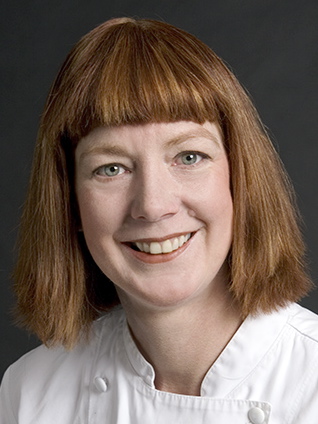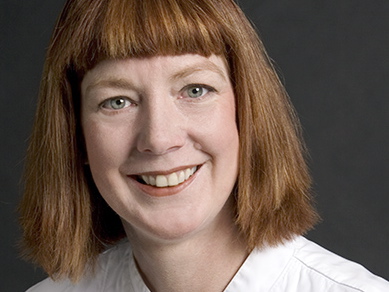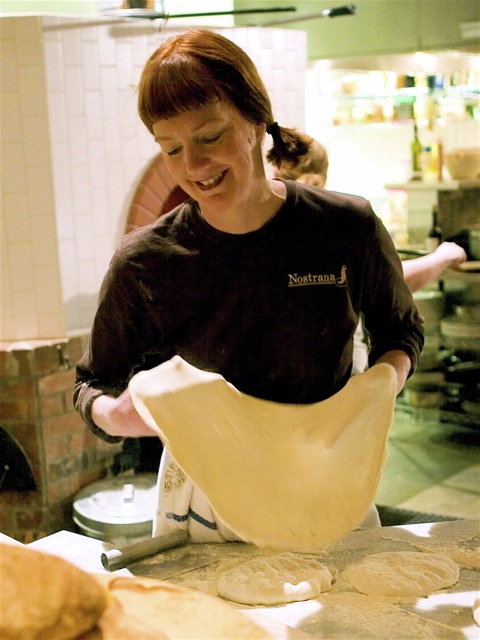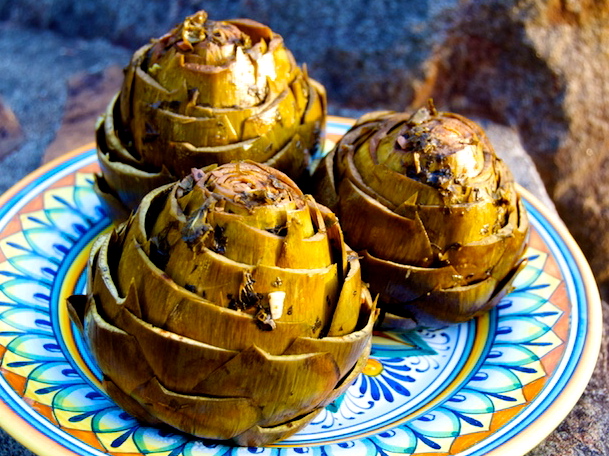
primary-image, l
(article, Jackleen de La Harpe)

primary-image, l
[%pageBreakSettings nobreak=true] p(blue). A chef and co-owner of Nostrana, an Italian restaurant in Portland, Oregon, Cathy Whims has won numerous awards for her work, including two Restaurant of the Year awards while she was head chef at Nostrana. p(blue). Her cooking career began at Genoa, another Italian restaurant in Portland, where she flourished for 20 years and eventually became a co-owner. After leaving Genoa, she and three partners began Nostrana, creating a menu dedicated to the simplicity and purity of regional Italian cooking. p(blue). In Italian, the word nostrana means “ours,” and it’s an accurate shorthand for what Whims sees as the most important way to prepare food: uncomplicated, nutritious, local, and sustainable. p(blue). “The real challenge,” says Whims, “is that I’m not even Italian.” What's your philosophy of food and eating? When I traveled to Italy, I fell in love with the simplicity of Italian cooking. Excepting star-level restaurants, the Italians experience food as their mother would cook it; it’s much purer. The food that I wanted to cook in this country is food that is rustic, informal, \[and\] ingredient-driven, not restaurant-driven. It’s very uncheffy, unintellectual; you have to take yourself out of the dish. [[block(sidebar). h1. Slow Food recipes Recipes from Slow Food Chefs can be found in our [/recipes/collections/slowfood "recipe collection."] ]] I studied with Marcella Hazan and came to realize that Italian cooking can be simple and pure. I wanted to make food that people wanted to eat again and again. How did you make the transition from formal cooking at Genoa to seasonal and ingredient-driven menus at Nostrana? Abruptly. My partner bought me out of my portion of Genoa and, in the following year, I went through something of a withdrawal; after 20 years, Genoa had become in large part, my identity. I had talked with friends, Marc and Deb Accuardi, about the possibility of opening a pizzeria. But as it turned out, this great space became available, which required a full menu to justify the rent. My husband and our partners opened the restaurant in 2006. We love this building, an old grocery store with arched exposed wood beams. [%image artichokes float=right width=400 caption="Carciofi alla Romana (Roman-Style Stuffed Artichokes)"] Nostrana means “ours,” as in, it belongs to us. But in Italy, in the Italian markets, it has a local meaning. Food is required to be marked by where it is grown, such as Morocco or Tuscany. "Nostrana" is the word that describes food that is grown locally and considered superior to all other food. Talk about your experience as a chef. It was my greatest dream to be able to work at, and later own, Genoa. The menu was formal, a seven-course prix-fixe meal, using the highest-quality ingredients for a perfect meal. Clients all had the same thing, which made it easy to focus on quality and the formal dining experience. But after a time, that structure was a kind of baggage that precluded experimentation or simpler cooking. At Genoa, for instance, chicken was left off of the menu for many years because it wasn’t special enough and because, at the time, the chicken itself was bland. It wasn’t until you were able to buy free-range chickens that had wandered around and eaten grass and bugs that it tasted like it did in France and Italy. I created an entrée of braised chicken with fresh figs — a very special dish. I was crushed to learn that someone had written a review on Citysearch about going to Genoa for the $100 chicken. I had really believed in this chicken. In traveling to Italy, I wanted to know more about Italian food, and I fell in love with the simplicity of Italian cooking. The focus of Nostrana is simple regional Italian cooking with the highest-quality local ingredients. We decided to cook with wood because it imparts so much flavor; we have a wood-burning pizza oven, grill, and rotisserie. [%image whims float=left width=300 credit="Photo: Frank DiMarco" caption="Whims at work in the Nostrana kitchen."] What are some of the trends you see in food buying and preparation? I see more farmers’ markets and more ingredients that are easier to obtain. How frequently do you travel to Italy? I used to travel there twice a year, now about once a year. I know a lot of winemakers, and it’s great to talk with food artisans and go to restaurants. Sometimes restaurant owners let me work in their kitchens, which gives me new food ideas and recipes. I was a delegate to Terra Madre, which was amazing and overwhelming. I wish I could go again, so that once I had the hang of it, I could make better use of the opportunity. I’m not an especially political person, but I felt it was a political act to be there. I returned to the United States very inspired, excited about the fact that at Nostrana we choose to cook in a sustainable manner, sourcing from local artisans. I was inspired to take that even further in the cooking at the restaurant. While you have a vision of how Italian food should be prepared, do your American clients understand the care and thought that goes into your work? A lot of people don’t understand. Others have thanked us for opening this restaurant, calling it their “home away from home.” We have a number of clientele who are Italian; they seem to think that we’re doing something authentic. Italians seem to have nearly an innate understanding of food; they know exactly how something should taste, almost like an ear for language. They have so much respect for food in that country. [[block(widebar). h1. Featured menu [%image sorbetto width=180 float=right] Cathy Whims' summertime menu evokes the flavors of Italy and the colors of the season. [[block(clear). ]] ]] In this country, large portions are an issue; Americans like a lot of food on their plates, they like to take something home. In reality, it’s not healthy and it’s hard to enjoy something when you’re thinking, "How will I eat all of this?" It’s unappetizing. At Nostrana, we make our own pasta. It’s a labor of love; the dough is kneaded by hand for 25 minutes. We have one employee who just makes pasta. In my mind, it’s precious. We serve an appropriate amount of pasta, but it’s not always easy to get Americans to understand that this is sufficient. I think Americans spend a small percentage of their income on food, and they don’t value it as much as other things like cars, clothes, and houses. That is not something I can change, but it’s not how I live. I put more value on food. How are the values of Slow Food reflected in your restaurant? I believe that the time we spend at the table is not as much a part of our culture as it should be. It is very important to eat well. It’s one of the basic ways you can have an enjoyable life: preserving the pleasures of the table. I think constantly about what I’ll eat, what I’ll cook next. It’s important to develop an ability to critique and be able to discern why a Chester blackberry tastes a certain way. I believe that healthier food is more pleasurable. It’s important to have an awareness of how good it is for you, how it is produced. There are guilty pleasures, but not empty ones. We’re very lucky in Oregon because we have access to so many different artisanal foods. Valuing what you’re eating at the time, especially eating with people — it should be sacred time. p(bio). Jackleen de La Harpe has been a science writer, a magazine editor, and a reporter for The Providence Journal_ in Rhode Island. She lives in Portland, Oregon.

reference-image, l

whims, l

promo-image, l

artichokes, l

sorbetto, l